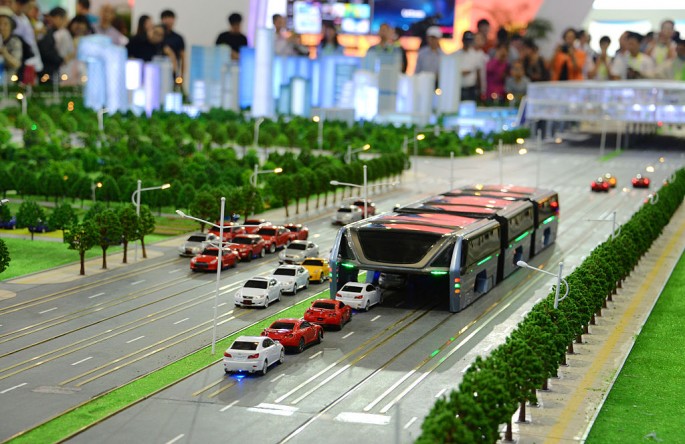The straddling bus, known as batie (or Transit Elevated Bus) designed by Chinese engineer, Song Youzhou has attracted the interest of countries such as Brazil, Spain, Mexico and Argentina as some people raised doubts on whether it would run smoothly, China Daily reported.
The questions were raised after the bus made a test run earlier this month in Qinhuangdao, Hebei Province.
TEB Technology Development Co, the maker of the straddling bus, said that the bus was designed to ease traffic congestion. It is 4.8 meters high, 7.8 meters wide and 22 meters long. It can carry about 300 passengers.
Some members of the media and netizens, however, doubted if the straddling bus would function as it should be, adding that some vehicles are taller than two meters and other vehicles are also bigger.
Song said that in most cities, more than 90 percent of the vehicles are sedans and SUVs, which are about 1.6 meters to 1.8 meters tall.
"Most of them can run under the bus, thus helping improve the utilization rate of roads," Song added.
The Chinese engineer said that the bus can cross bridges as the TEB was designed for different cities based on road width and the characteristics of bridges along its route.
"If the bridges are low, the top cover of the TEB will be made to be adjustable up and down, allowing it to pass," Song said.
Some netizens also questioned whether the bus can carry that much weight.
According to Song, the TEB weighs about 36 metric tons at most, including the weight of the 300 passengers and the carriage, which is almost the same as trucks carrying stones that usually weigh 90 tons.
Yang Tao, chairman of Nanjing Institute of City and Transport Planning Co, was quoted as saying that "the special structure might not be safe running at more than 30 km per hour".
Several cities in China plan to invest in the bus, TEB Technology Development Co said.
Song had predicted that about 500,000 TEBs will be needed in the future.
"At present, we are just doing experiments," Song said. He added that the TEB could be used on roads by the second half of 2017.



























